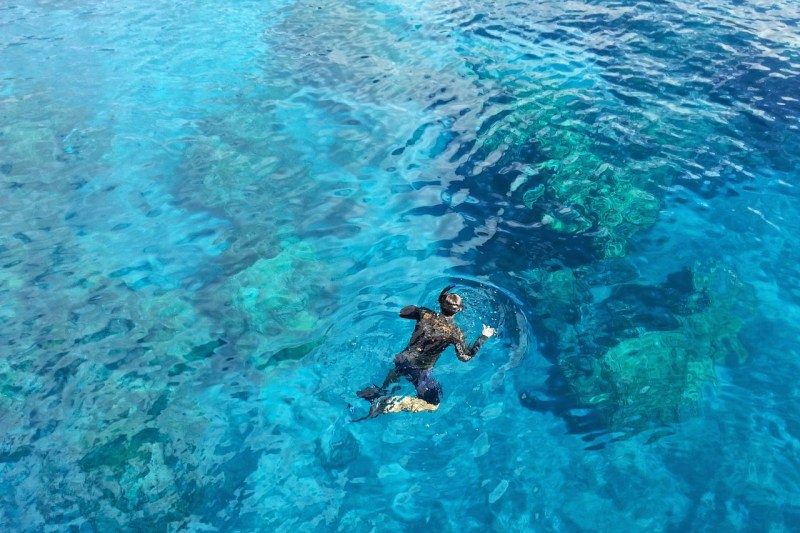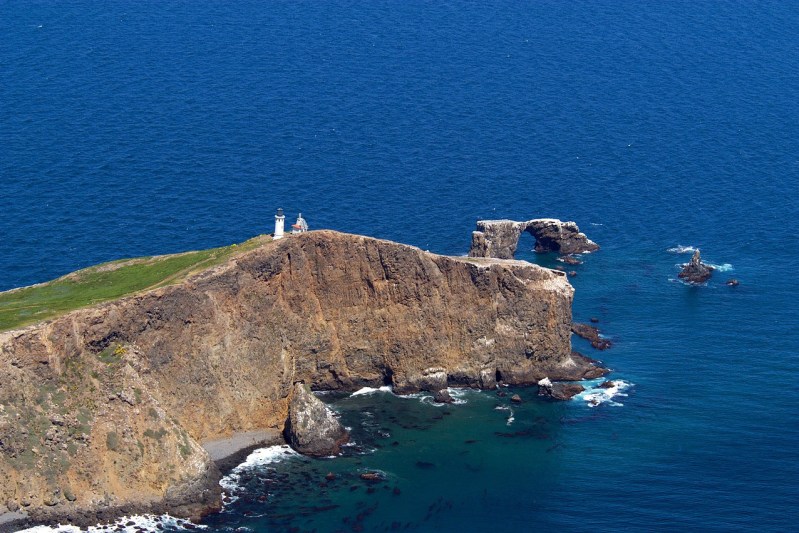
Take a deep breath and dive beneath the surface, and an entirely different atmosphere swallows you up. All kinds of colorful fish, colonies of polyps that make up dwindling reefs, stingrays, and, if you’re lucky, sea turtles or even whales might come into view. While snorkeling is sometimes overlooked for recreational scuba diving, this relatively tame activity can be so much more exciting than you expect.
In some destinations, such as Grand Cayman, you can even take WaveRunners from snorkel site to snorkel site. Regardless of the destination, feeling the sun on your back while you float and swim through cool water is just the beginning.
While there are some incredible destinations all over the world for snorkeling (not surprisingly, many happen to be at or near the world’s best dive spots), there are also tons of thriving locations in and around the United States. From tropical locales to unusual destinations, these eight places are home to some of the very best snorkeling in the U.S.

Culebra
Puerto Rico
Just 1,150 miles south of Florida, Puerto Rico is home to incredible snorkeling. But if you travel just beyond the U.S. territory’s shores, the island of Culebra offers some of the best snorkeling you’ll find in the U.S. The cays of Culebra — such as Tamarindo, Flamenco, and Culebrita, among others — each have coral reefs brimming with life. It’s even likely snorkelers can spot sea turtles and stingrays just by swimming off from the shore toward the reefs. If you prefer, you can always book a tour with local companies like Culebra Island Adventures or visit the Culebra Snorkeling and Dive Center for rental gear.

Papalaua Wayside Park
Wailuku, Hawaii
Naturally, Hawaii is a stunning destination for snorkeling. From its clear, blue waters to the wildlife you’ll find swimming through them, Papalaua Wayside Park offers so much for snorkelers to observe. While tropical fish are always fun to see, this is another great destination to look for sea turtles and even whales, especially. Sometimes, you can hear the whales singing underwater even if you can’t see them off in the distance.
There’s also a volcanic crater that’s worth venturing out to near Molokini. The crater includes hundreds of species of fish, and some are native to the volcanic grounds. Though the sunken snorkel site is deep, the water is so clear that visibility often reaches up to 150 feet, making this one of the best snorkeling spots in the country.

Dry Tortugas National Park
The Florida Keys
If you prefer to skip a flight but seek tropical waters, head for the Florida Keys (south of the island of Key West, actually). Dry Tortugas National Park is just about as far south as you can go within the continental U.S. and offers stunning snorkeling options. This classic destination for white sand beaches, blue water, and underwater adventure remains a top pick. Some of the reefs near Dry Tortugas are thousands of years old and boast dozens of coral species. Some are even threatened coral species, such as Elkhorn, so if you do go, be sure to practice caution. As always, avoid touching the coral or coming into contact with any wildlife at this best-of national park.

Anacapa Island
California
While California is known for laid-back beaches and the West Coast’s best surfing, it’s also home to some damn fine snorkeling opportunities. Head to the Channel Islands and Anacapa Island, in particular, where the surrounding kelp forests set this apart from every other snorkeling spot in our roundup. Swimming here is like floating above a towering magical green forest that rises up from the sea floor. The Channel Islands can be a little more challenging than most to snorkel and even navigate. There is no public transportation available — all visitors must arrive and get around via kayak or private boat. Check with the National Park Service for the low down on the best ways to get there and around.

John Pennekamp Coral Reef State Park
Key Largo, Florida
The only permanent underwater sculpture exhibit in the United States is located just off of Grayton Beach State Park, an impressive one-acre area that includes nine artificial reefs. The bad news is that these sculptures are located in 58 feet of water and are only accessible by diving.
However, those still looking to be wowed by underwater art should head to John Pennekamp Coral Reef State Park. There, snorkelers can see Christ of the Abyss, a 4,000-pound sculpture that’s just 25 feet below the surface. Molasses Reef is also a must-see while snorkeling in this state park that covers 70 nautical square miles.

Acadia National Park
Bar Harbor, Maine
Another unusual but amazing snorkeling destination is the rocky coast of Acadia National Park in Maine. While you have to take extra precautions to ensure your safety due to strong currents and tides (and most definitely wear a wetsuit to ward off the chill of the water any time of year), it is entirely possible to snorkel or dive here.
The appeal is the wildly different flora and fauna you’ll see when you get underwater. While near-shore tidal pools are incredibly diverse ecosystems, getting out into the water just offshore opens up a larger area to see even more diverse and interesting wildlife. Little Hunters Beach is a prime place to snorkel in Acadia. There, you can see copper sweepers, red sponges, and even moray eels. Book your National Park campsite here this summer.

Cinnamon Bay
St. John, Virgin Islands
Heading south of the continental U.S. again, Cinnamon Bay is another of the country’s best snorkeling destinations. Located inside the Virgin Islands National Park, some 1,242 miles south of Florida, the U.S. territory offers easy access to snorkeling reefs. Cinnamon Bay is rather shallow, which means you can simply walk off the shore with your fins and mask and reach the reef with minimal effort (or a boat). Of course, there are tons of tropical fish to marvel at, but since the cay is surrounded by the reef, you’ll have plenty of space to follow them too.

Crystal River Preserve State Park
Crystal River, Florida
Located within an hour of Ocala, Florida, or 90 miles north of Tampa, Crystal River Preserve State Park is a unique snorkeling destination. The waters there are incredibly clear, which means you have a completely unobstructed view of the underwater inhabitants. Instead of swimming with fish, Crystal River is home to tons of manatees, and snorkelers can actually swim with them. It’s an unusual yet enthralling twist on classic snorkeling.
Be sure to visit Three Sisters Springs to ensure you can see and take a dip with the manatees. Don’t forget to take an underwater camera or even a waterproof case for your phone. There’s no doubt you’ll want to snap a few photos of these “gentle marine giants.”
Snorkeling tips
Now that you know where you can go in the U.S. to snorkel, we’ll provide you with some tips so you have the best time in the water and that you stay safe.
Make sure you choose the right snorkel gear, whether you buy your own or rent. Ensure your mask fits snugly without leaking and that the fins are comfortable and propel you efficiently. Consider full-foot fins if you’re a beginner. Ensure you know basic skills and practice mask clearing and underwater breathing in a pool or shallow water before venturing out. Stay informed about the location you’re going to snorkel by researching it, including tides, currents, and potential hazards like marine life or boat traffic.
Apply reef-safe sunscreen to avoid harming coral and marine life. Wear a rash guard or wetsuit for sun protection and warmth, if needed. It’s important that you buddy up in the water and snorkel with a partner who can assist you in case of any issues. Stay within sight of each other and communicate clearly. Respect the environment and don’t touch or damage coral or marine life. Avoid feeding fish, as it disrupts their natural behavior. Leave nothing but bubbles and take only memories.


